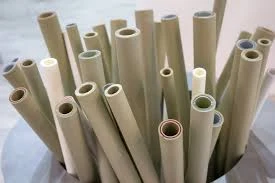
-
 Afrikaans
Afrikaans -
 Albanian
Albanian -
 Amharic
Amharic -
 Arabic
Arabic -
 Armenian
Armenian -
 Azerbaijani
Azerbaijani -
 Basque
Basque -
 Belarusian
Belarusian -
 Bengali
Bengali -
 Bosnian
Bosnian -
 Bulgarian
Bulgarian -
 Catalan
Catalan -
 Cebuano
Cebuano -
 China
China -
 China (Taiwan)
China (Taiwan) -
 Corsican
Corsican -
 Croatian
Croatian -
 Czech
Czech -
 Danish
Danish -
 Dutch
Dutch -
 English
English -
 Esperanto
Esperanto -
 Estonian
Estonian -
 Finnish
Finnish -
 French
French -
 Frisian
Frisian -
 Galician
Galician -
 Georgian
Georgian -
 German
German -
 Greek
Greek -
 Gujarati
Gujarati -
 Haitian Creole
Haitian Creole -
 hausa
hausa -
 hawaiian
hawaiian -
 Hebrew
Hebrew -
 Hindi
Hindi -
 Miao
Miao -
 Hungarian
Hungarian -
 Icelandic
Icelandic -
 igbo
igbo -
 Indonesian
Indonesian -
 irish
irish -
 Italian
Italian -
 Japanese
Japanese -
 Javanese
Javanese -
 Kannada
Kannada -
 kazakh
kazakh -
 Khmer
Khmer -
 Rwandese
Rwandese -
 Korean
Korean -
 Kurdish
Kurdish -
 Kyrgyz
Kyrgyz -
 Lao
Lao -
 Latin
Latin -
 Latvian
Latvian -
 Lithuanian
Lithuanian -
 Luxembourgish
Luxembourgish -
 Macedonian
Macedonian -
 Malgashi
Malgashi -
 Malay
Malay -
 Malayalam
Malayalam -
 Maltese
Maltese -
 Maori
Maori -
 Marathi
Marathi -
 Mongolian
Mongolian -
 Myanmar
Myanmar -
 Nepali
Nepali -
 Norwegian
Norwegian -
 Norwegian
Norwegian -
 Occitan
Occitan -
 Pashto
Pashto -
 Persian
Persian -
 Polish
Polish -
 Portuguese
Portuguese -
 Punjabi
Punjabi -
 Romanian
Romanian -
 Russian
Russian -
 Samoan
Samoan -
 Scottish Gaelic
Scottish Gaelic -
 Serbian
Serbian -
 Sesotho
Sesotho -
 Shona
Shona -
 Sindhi
Sindhi -
 Sinhala
Sinhala -
 Slovak
Slovak -
 Slovenian
Slovenian -
 Somali
Somali -
 Spanish
Spanish -
 Sundanese
Sundanese -
 Swahili
Swahili -
 Swedish
Swedish -
 Tagalog
Tagalog -
 Tajik
Tajik -
 Tamil
Tamil -
 Tatar
Tatar -
 Telugu
Telugu -
 Thai
Thai -
 Turkish
Turkish -
 Turkmen
Turkmen -
 Ukrainian
Ukrainian -
 Urdu
Urdu -
 Uighur
Uighur -
 Uzbek
Uzbek -
 Vietnamese
Vietnamese -
 Welsh
Welsh -
 Bantu
Bantu -
 Yiddish
Yiddish -
 Yoruba
Yoruba -
 Zulu
Zulu
grp chemical product
Understanding GRP Chemical Products Innovations and Applications
In recent years, the demand for specialized chemical products has surged, particularly in industries that prioritize durability, efficiency, and sustainability. Among these innovative materials, Glass Reinforced Plastic (GRP), also known as fiberglass, stands out due to its unique properties and wide range of applications.
What is GRP?
Glass Reinforced Plastic is a composite material made of a polymer matrix reinforced with glass fibers. This combination provides GRP with a high strength-to-weight ratio, making it exceptionally durable while remaining lightweight. The manufacturing process typically involves combining resin with glass fibers, which are arranged in a variety of configurations to enhance mechanical properties. The result is a versatile material that can withstand harsh environmental conditions, making it ideal for many applications.
Key Benefits of GRP
1. Durability GRP is highly resistant to corrosion, making it suitable for use in environments where traditional materials like steel or wood would deteriorate quickly. This resilience extends the lifespan of products, reducing the need for frequent replacements and maintenance.
2. Lightweight One of the most attractive features of GRP is its lightweight nature. This property facilitates easier handling and transportation, decreasing shipping costs and simplifying installation processes in various applications, from construction to automotive.
3. Versatility GRP can be molded into complex shapes and customized to meet specific performance requirements. This adaptability makes it popular in industries ranging from aerospace and automotive to marine engineering and construction.
4. Cost-Effective When considering the lifespan and reduced maintenance costs, GRP often proves to be more cost-effective than traditional materials. Its longevity and durability lead to lower lifecycle costs, which can be especially beneficial for large-scale projects.
grp chemical product

Applications of GRP
The applications of GRP are numerous, reflecting its versatility and strength. In the construction industry, GRP is often used for roofing, cladding, and structural components. Its lightweight properties enable easier installation, while its resistance to moisture and UV light ensures long-lasting performance.
In the automotive sector, GRP is employed for manufacturing various components, including body panels and interiors. The automotive industry values GRP for its ability to reduce vehicle weight without compromising safety or performance, leading to improved fuel efficiency.
Marine applications of GRP are also significant. This material is used in the production of boat hulls, decks, and other marine structures due to its ability to withstand saltwater and harsh weather conditions.
Additionally, GRP is making strides in renewable energy. It is commonly utilized in the construction of wind turbine blades, where the combination of lightness and strength contributes to the efficiency of energy generation.
Future Prospects
As industries continue to seek sustainable solutions and innovative materials, GRP is poised for growth. Continued advancements in manufacturing processes and formulations are likely to enhance its properties further, opening new avenues for innovation. Furthermore, the emphasis on eco-friendly materials may drive the development of greener resins and recycling methods for GRP.
In conclusion, GRP chemical products represent a significant advancement in material science. Their unique properties, coupled with a growing focus on sustainability, position GRP as a frontrunner in various industries. As technology evolves, the potential applications of GRP will undoubtedly expand, paving the way for a more sustainable and efficient future.
Latest news
-
Exploring the Benefits of Top Hammer Drifter Rods for Enhanced Drilling PerformanceNewsJun.10,2025
-
High-Precision Fiberglass Winding Machine for GRP/FRP Pipe Production – Reliable & Efficient SolutionsNewsJun.10,2025
-
FRP Pipes & Fittings for Shipbuilding - Corrosion-Resistant & LightweightNewsJun.09,2025
-
Premium FRP Flooring Solutions Durable & Slip-ResistantNewsJun.09,2025
-
Premium Fiberglass Rectangular Tanks Durable & Lightweight SolutionNewsJun.09,2025
-
Tapered Drill String Design Guide Durable Performance & UsesNewsJun.09,2025









